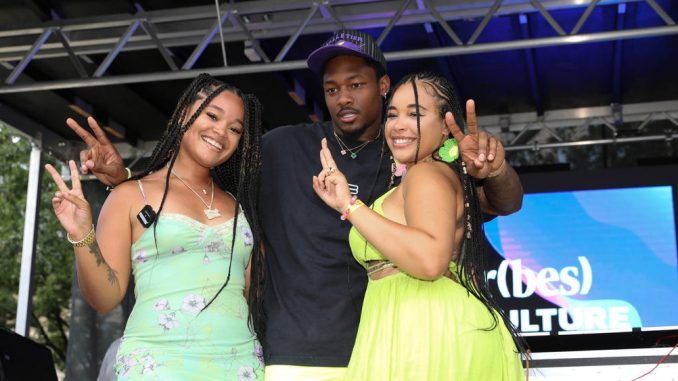
ROME, ITALY – JULY 08: Moldels walk on the runway at the Valentino haute couture fall/winter 22/23 … [+]
An exuberant and far-flung Haute Couture schedule has flooded Instagram feeds for the past month. Balenciaga’s second Couture show was the highlight of Paris, Valentino returned to its hometown with an incredible presentation on Rome’s Spanish Steps, and Dolce & Gabbana hosted its over the top Alta Moda extravaganza in Sicily. For the uninitiated, Couture is much more of an art than a business, bought only by the super wealthy. When one considers that the entry price point for a Dior couture dress is about $100,0000, it becomes apparent that Couture is an incredibly successful marketing strategy used to drive desire for billions of dollars in sales of ready-to-wear, handbags, shoes, and perfume.
As the second half of 2022 begins with the euro at an historic parity to the dollar and distressing financial news on a daily basis, luxury retailers and brands can take solace knowing that luxury goods sales often prove to be impervious to economic turmoil. Even without a major Russian presence, luxury has been estimated by Bain to grow 5% this year—not bad, but certainly significantly less robust than 2021’s approximately 15% increase in sales. When growth shrinks, the most astute brands will develop ways to take market share. Dior has even gone to unprecedented lengths to try to recover €100,000 in what the brand says was lost sales at its Rome boutique due to the inconvenience caused by Valentino’s show on the Spanish Steps. Clearly, every euro counts!
Growing market share is trickier than it sounds in the luxury space, especially with e-commerce and direct-to-consumer channels. It’s not simply about creating a bigger funnel. Identifying the “right” extended, broader target audience and then creating authentic experiences for that audience is one way to do it. For instance, the luxury sneaker phenomenon introduced hype culture into luxury, resulting in enormous brand awareness and millions of new customers for luxury houses such as Balenciaga, Dior, and Fendi.
Yet it remains that the luxury world builds brand equity through exclusion rather than inclusion. Which is why it was surprising to see Amazon
AMZN
Amazon’s volume of traffic may sound attractive. However, its marketplace rules apply to all brands equally, meaning that this exposure comes at a substantial cost. Owning the direct-to-consumer channel is an imperative in all sectors today, but even more so in the luxury world. An owned digital channel has the same value as a Bond Street flagship—they are two sides of the same coin. Physical and digital stores should complement each other. They can jointly cultivate the same intimate relationship with the consumer, while delivering powerful storytelling content that nourishes aspiration and desire. An owned DTC channel delivers far greater customer lifetime value and maintains margins, which in a constricting economy can be the single point of difference between profit and loss. Third-party platforms may be able to deliver millions of consumers, but luxury brands do not need millions—they just need to touch the right consumer.
In the new economic environment, luxury brands must be selective about building an ecosystem that delivers on their brand promise. Maintaining control of the customer relationship, the customer data, and the brands with which it shares space, whether digitally or physically, is one and the same today.

Leave a Reply